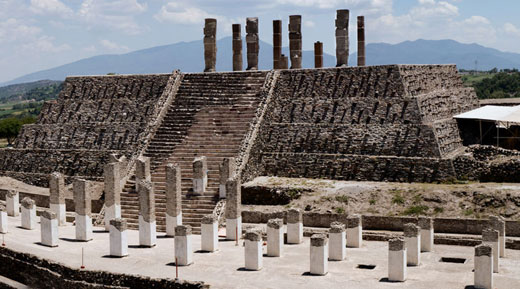By Jacqueline Howard: When winter storms force us to brace for freezing rain, wind, sleet and snow, lives can be in danger. A developing “bomb cyclone” prompted alerts for tens of millions of people from Washington state to Maryland, according to the National Weather Service. The storm will affect much of the country, but the most serious effects will be a blizzard in the Midwest on Thursday and Friday.
A developing “bomb cyclone” prompted alerts for tens of millions of people from Washington state to Maryland, according to the National Weather Service. The storm will affect much of the country, but the most serious effects will be a blizzard in the Midwest on Thursday and Friday.

Snow, strong winds and bitterly cold temps grip much of the US during Christmas week
The National Weather Service is also warning of “life-threatening” wind chills in the Upper Midwest, where the temperature will feel as cold as 50 to 55 degrees below zero. Nearly 40 million people are under wind chill alerts as far south as Alabama and Texas.
Infants and older adults are most at risk for cold-related illnesses or injuries, because babies lose body heat more easily and older adults tend to make less body heat.
But there are steps you can take to keep yourself and others safe when extreme cold strikes.
Tips to stay safe indoors
When staying indoors during cold temperatures or a winter storm, the US Centers for Disease Control and Prevention offers these tips:
- Make sure any infants younger than 1 year old are not sleeping in cold rooms and have adequate warm clothing, such as footed pajamas, one-piece wearable blankets or sleep sacks. Remove any pillows or other soft bedding from a baby’s crib, since they pose the risk of smothering or sudden infant death syndrome.
- If you have friends or neighbors older than 65, check on them frequently to ensure that their homes are adequately heated.
- Leave water taps slightly open to prevent freezing pipes.
- Eat well-balanced meals to stay warm.
- Avoid alcohol and caffeine, because they can cause your body to lose heat more rapidly.
“Never using generators, gas or charcoal grills, camp stoves, or similar devices inside your home, in basements, in garages, or near windows,” the CDC says. “The fumes are deadly.”
Using the stove for heat is not safe, the CDC warns; instead, use extra blankets, sleeping bags or coats. A well-maintained fireplace or a portable space heater may be a safe alternative.
Tips to stay safe outdoors
When venturing outdoors during a winter storm, the CDC and National Weather Service have some recommendations:
- Dress warmly with hats, scarves and mittens and by wearing layers.
- Avoid walking on ice and avoid getting wet.
- If you have to shovel snow or do other outdoor work, take your time and work slowly. If you have older neighbors, offer to help shovel their walkways or driveways.
- Avoid traveling on ice-covered roads if possible.
- If you are stranded outdoors, it is safest to stay in your vehicle.
- Try to keep pets indoors during cold weather, but if they go outside, thoroughly wipe their legs and underbelly free of snow when returning indoors. Never let your dog off leash on snow or ice.
What the bitter cold does to your body
Many of us feel the freezing temperatures of winter in our toes and fingertips before elsewhere in the body.

This happens as your body works to protect your vital organs from the cold, Dr. Suzanne Salamon, associate chief of clinical programs at Beth Israel Deaconess Medical Center in Boston, previously told CNN.
“The blood vessels in all different parts of the body will constrict,” she said. “They’ll get smaller to try to preserve heat.
“What the body tries really hard to do is to protect the most important organs, which are the ones deep inside: the heart and brain and lungs,” she said. “The body tries to keep those warm by redirecting heat from the fingers and toes inward, so the blood vessels in the fingers and toes get really small, and not enough blood goes through them.”
This is important for the body to do – and to do quickly – because wintry weather has been associated with health risks for heart attacks, asthma symptoms, frostbite and hypothermia.
Globally, more temperature-attributable deaths tend to be caused by cold than by heat, according to a 2015 study in the journal The Lancet.
A cold-hearted risk
Frosty weather can affect your heart, especially if you have cardiovascular disease. “You always hear about people going out and shoveling snow and having a heart attack,” Salamon said.

“Snow shoveling is one example where we see people who have heart disease, or risk factors for heart disease, exerting themselves more than they may otherwise. Shoveling is hard work; people who have cardiac disease and back problems are at higher risk for injury or illness while shoveling,” Dr. Reed Caldwell, an assistant professor in the Ronald O. Perelman Department of Emergency Medicine at NYU Langone Medical Center and an emergency department physician, told CNN previously.
A mere 1-degree Celsius reduction in temperature was associated with a cumulative 2% increased risk of heart attack in a 2010 study in the BMJ.
The study involved data on 84,010 hospital admissions for heart attacks in England and Wales between 2003 and 2006. The researchers analyzed the data to determine any possible relationship between outdoor temperature and heart attack occurrences.
However, the heart isn’t the only part of the body that might be vulnerable to health problems in the winter.
Coping with asthma in the winter
Cold weather can wreak havoc on your lungs, as dry air may irritate the airways, especially for people with lung diseases such as asthma, according to the American Lung Association.
“Cold air causes bronchospasm, so people with asthma and COPD can find themselves having increased symptoms in the winter months,” Caldwell said.
If you have asthma and are exposed to cold weather, “wear a scarf around your nose. That certainly helps, because then you’re breathing in your own steam from your mouth,” Salamon said.
On the other hand, a more well-known, cold-related health issue is frostbite.
Frostbite: A danger even for the eyes
Frostbite can happen in freezing temperatures when your blood vessels narrow, skin temperature drops and ice crystals form around and within your cells, causing damage.
“There’s a continuum of cold-related skin injury. The first is called ‘frostnip,’ and that is a cooling of the outermost skin tissue without any actual destruction to the tissue. You know this is happening because the skin can become discolored, sometimes bright red, and can look irritated and feel extra sensitive, and that’s a good warning sign that the skin is getting too cold,” Caldwell said.
“Then, frostbite involves actual skin destruction, and frostbitten skin usually appears pale, waxy, and can sometimes turn even purple or black as the tissue begins to die. Frostbitten skin can be numb or painless,” he said.

25 ways to stay warm this winter that won’t break the bank
Frostbite can even happen in your eyes, Salamon said. “When you’re out in the cold windy weather, you can actually get frostbite of your eyes, which is really dangerous,” she said.
“The cold starts to form little blisters in your eye or little crystals on your skin, which can turn around and damage the skin or the eye itself,” she said. “Those blood vessels really get very constricted, so there’s not much blood going through it, which cuts down on the circulation of the eyes.”
The blood vessels are constricting in order to prevent hypothermia, a dangerous condition that occurs when your body loses more heat than it produces, causing its core temperature to drop below 95 degrees Fahrenheit.
“The most worrisome health effect from cold exposure is hypothermia, which can cause damage to vital organs, including the heart, nervous system and kidneys. In extreme cases, death can occur. This often is a result of abnormal cardiac rhythms,” said Dr. Jeahan Colletti, an emergency medicine specialist at the Mayo Clinic in Rochester, Minnesota, previously told CNN.
Those most at risk for hypothermia – and any cold-related health hazard – tend to be older adults, Salamon said.
“If people have a neighbor who is an older person, when there’s weather that’s really cold, they should check up on them. When people get really, really cold, they can get very confused and not even know enough to call for help,” she said.
More tips to stay warm and healthy
What else can people do to stay warm and healthy this winter? An important risk-reducing measure hinges on wardrobe.
“It’s really important to dress in layers, so … put on more than one pair of gloves and then a mitten on top of that, because the air that’s trapped in between those layers help to keep you warm,” Salamon said.
“Tight-fitting clothes are not a good thing, because you’re not able to get the benefit of the layers. You really need to have looser sweaters, shawls if you’re sitting inside, to try to layer up. It helps to have a ski mask to protect your ears and your nose,” she said. “If you get wet, like if you’re out playing in snow or shoveling snow, take off wet clothes, because the wet clothes really make it worse. They make things colder. … Boots should be waterproof.”
Preventive measures not only involve dressing for the cold but also avoiding too many cocktails in cold weather, said Colletti, of the Mayo Clinic.
“Avoid drinking alcohol when in the cold, as mental awareness is impaired, thereby limiting ability to recognize symptoms of significant cold exposure. Alcohol also causes dilatation of the body’s blood vessels, increasing heat loss,” she said.
CNN’s Dave Hennen and Jamie Gumbrecht contributed to this report.








































